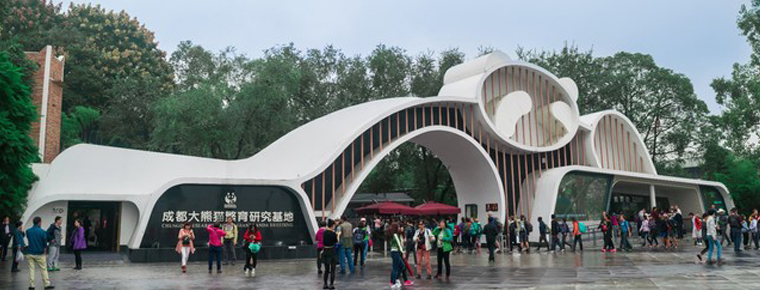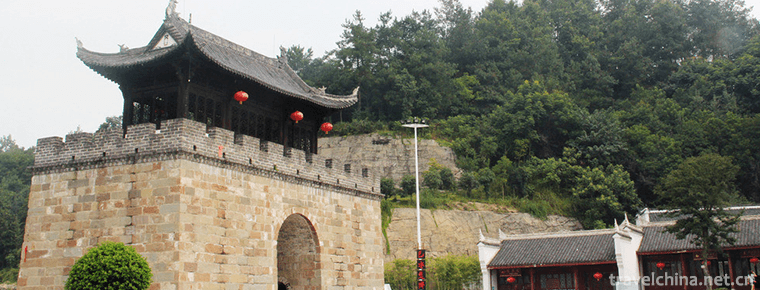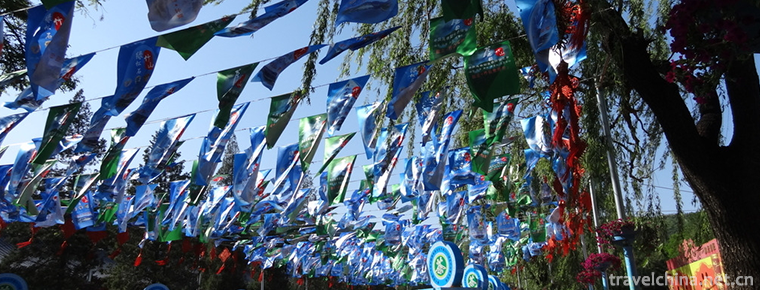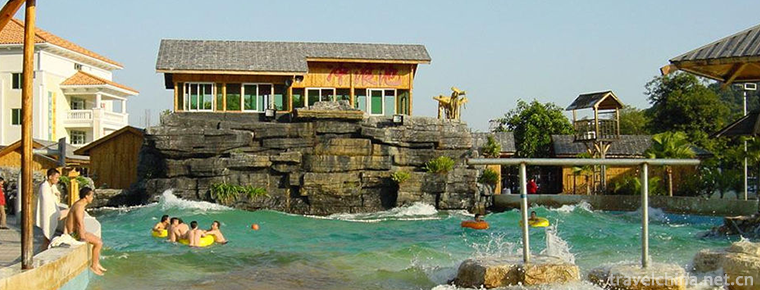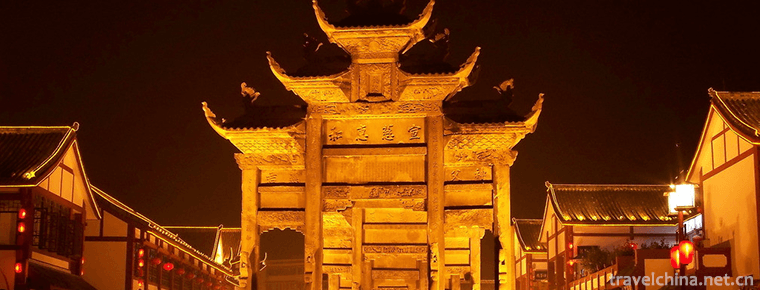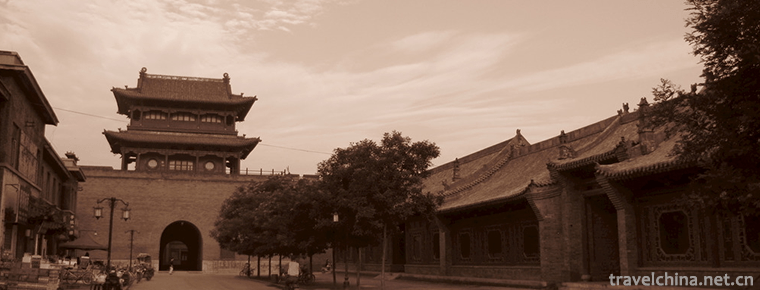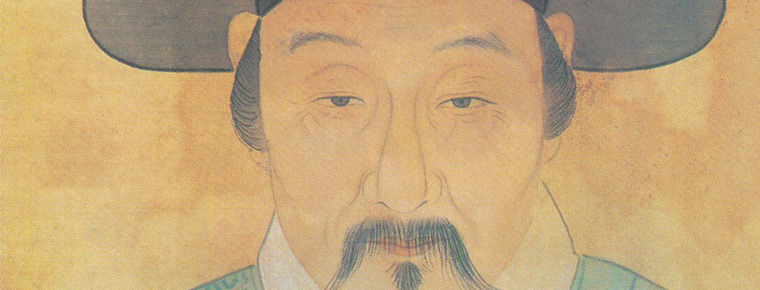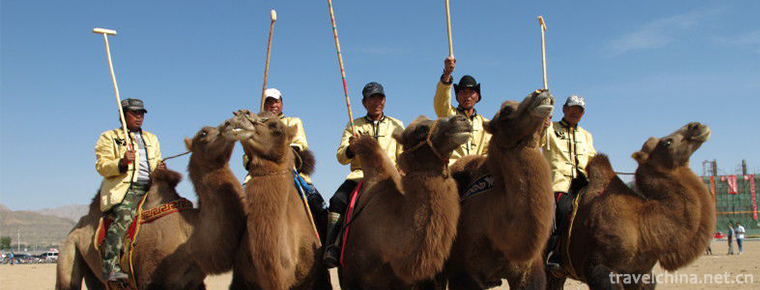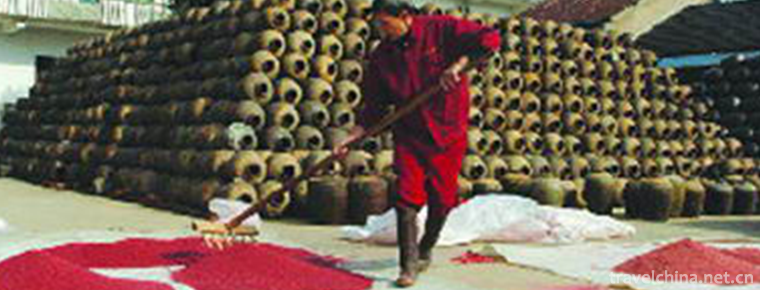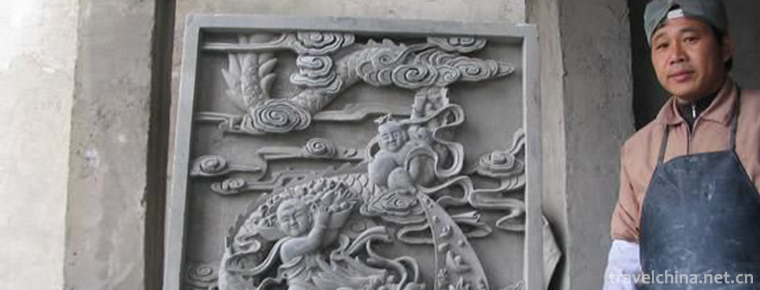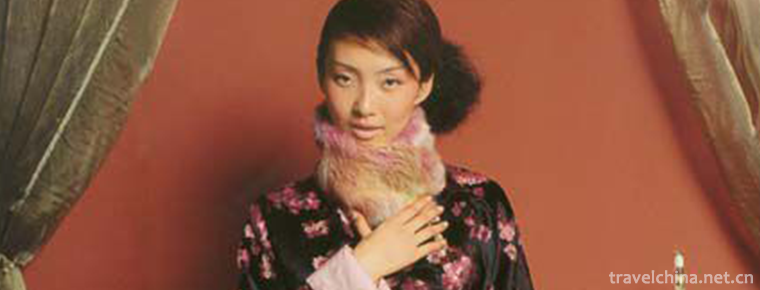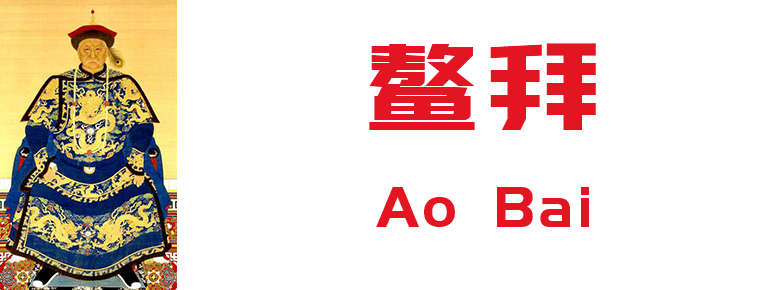Lantern show
Lantern show
Lantern Opera is not only a traditional folk opera with local characteristics in Chongqing and Sichuan, but also one of the important voices of Sichuan Opera. It originates from northeast Sichuan. Because its performances are mostly combined with folk activities such as Spring Festival, Lantern Festival, Social Fire and Celebration Tan, it has formed the characteristics of many small operas, many comedies and many farces. Generally, it has large scenes, complex plots and many characters. Play.
On May 20, 2006, with the approval of the State Council, the lantern opera was selected into the first batch of national intangible cultural heritage list.
Brief history of drama
Lantern Opera is a local traditional opera originating from northeastern Sichuan Province. It is an artistic treasure created by the working people, continuously improved and enriched through long-term development. It is also the crystallization of the painstaking efforts and wisdom of countless folk artists from generation to generation.
Since the Qin and Han Dynasties, the Ba people living in the Jialing and Qujiang valleys have been prevalent with feudal superstitious social customs due to traffic congestion and backward cultural and economic conditions. Families who are seriously ill, invite witches to dance gods, suffer from malaria, they have to expel the ghosts; when they die, they call Duangong "Qingtan"; when they encounter severe drought, they have to ask the Dragon King for rain... In these customs, witches and wizards sing and dance loudly, accompanied by musical instruments, loud and powerful, and frighten people. Influenced by these customs, Ba people lack scientific knowledge, either in order to eliminate fatigue in heavy manual labor, or after harvest to express joy, or in the face of natural disasters and man-made disasters to pour out grief, or in grievance and depression.
At first, three or two people roared and shouted together, singing and dancing to express joy, anger, sadness and joy. Later, on the basis of real life, according to the stories they heard and heard, they compiled and sang their own dramas with plots. Therefore, the earliest lantern operas were often associated with Duangong's activities such as "celebrating the altar" and "sending ghosts". With the development of drama in Ming Dynasty, lantern opera also changed from singing to performing, not only singing, but also accompanied by movement and musical instruments. At the same time, it gradually separated from Duan Gong's activities and carried out independently. With the evolution of time and the progress of human society, it gradually developed and perfected into today's kind. Son.
Traditional drama
"Tailoring Master", "Back Bride", "Gambling Daughter-in-law", "Accepting Tribute Silver", "Bao Gong's Mirror", "Zhou Document Chicken", "Show Talents Buy Bottles", "Romantic Younger Sisters Married to Who", "Ride by the Wrong Car", "Mother-in-law on the sedan chair", "Riot Party", "Double Baiting Hall", "Prodigal Son Married Mother" and so on.
Performance conditions
Limited to the conditions in the countryside, this kind of Lantern play should be suitable for the situation in the countryside. It does not require large stage, halls, courtyards, dams, lawns and river beaches, as long as there is a level which can accommodate three or five people. Yes. The audience can enjoy the performance from all sides.
In the evening performance, if there is a bright moon hanging high, there is no need for additional lighting. If the moon goes dark, just light the oil lamp. With the evolution of time and the development of the Lantern opera, the performers gradually form a team with a certain level of performance. By the Ming and Qing Dynasties, the lantern opera is more popular, whether it is the creation of plays, props, clothing, there is a certain progress. The scale of lighting has also been expanded. This lamp is divided into main lamp and desk lamp. The main lamp is bigger. It can not only illuminate the performance, but also show the signs of the performance team and decorate each one.
Characteristic images, some even painted the programs of the lamp class, play the role of advertisement. And the table lamps are hung in the corner of the venue, usually four, and divided into four corners. The four corners of the lamp are fixed. Besides, there are eight, sixteen, twenty-four, and can be hung more, and in various forms. The number of lamp is determined by the size of the performance and the number of people watching. Yes. These lights can be moved according to the needs of the actors. The lamp play is named for its performance under the illumination of the lamp.
The props of Lantern opera also change with the development of time. At first, there were no special clothes, but later they were set up according to the needs of the plot. For example, ancient operas were equipped with simple costumes. Musical instruments were also used to make sounds, such as basins, plates, bowls and so on. Later, they gradually became Erhu, Suona, gongs, drums and so on.
Performance scale
The scale of the lantern opera is not large, because there are only two or three characters in the play, so the earliest general one or two people. Later, the repertoire increased. By the Ming and Qing Dynasties, the rise and development of other plays also promoted the prosperity of the Lantern opera, increasing to 56 people, with a maximum of only ten people. Generally speaking, the male actors are dressed up as male actors. After liberation, female actors participate in the performance.
Performing content
The content of the lantern opera is rich and colorful, mainly reflecting people's real life, but also reflecting the past era. Many themes are to praise the working people for their diligence, wisdom, bravery, simplicity and kindness, and to criticize the greed, harshness, stinginess, stupidity, fatuousness and cruelty of corrupt officials. There are also praises for honest officials. The lantern opera eulogizes the true, the good and the beautiful, denounces the false, the ugly, and expresses the working people's happiness for freedom and equality. The thirst for happiness.
The earliest plot was simple. A play had only one plot. Later, it developed from a small single scene to a large one. The style of performance gradually evolved from a single bold and bold to interesting, humorous, implicit and interesting. The repertoire also changed from a single to a variety of. Later, it was divided into three categories: main lamp, floor lamp and wave lamp.
social influence
The lantern opera is a popular art and enjoys a certain reputation among the people. In the 1980s, the Sichuan Opera Troupe of Yuechi County sent its actors to study the art of Lantern opera in other places and among the masses, rehearsed a series of plays, and performed in Chongqing, Chengdu and Beijing. In Chongqing, Jiangwei, Yanghe Tang, Madame Bigfoot and other twists and turns were performed. After performing in Chengdu, Sichuan TV broadcasted videos of such dramas as "Who is your sister married to", "Mother-in-law going to the sedan chair". In May 1988, at the invitation of the Chinese Dramatists Association, the Opera Research Institute of the Chinese Academy of Art, the Drama Review Department and the National Academy of Modern Opera Research, they went to Beijing. In Chang'an, Jixiang and Zhongnanhai theatres, there were eight performances of Yuechi Lantern Opera "Baogong Looking in the Mirror", "Zhou Document Chicken", "Show Talents Buying Bottles", "Who's the Romantic Younger Sister Married", "Ride by the Wrong Car", "Mother-in-law Getting on the Car". Leaders such as Liao Hansheng, Vice Chairman of the Standing Committee of the National People's Congress, experts such as Cao Yu, and foreign guests from more than 10 countries, such as Singapore and Japan, attended the show.
More than 20 newspapers, radio and television stations, such as People's Daily, reported the grand performance. Yuechi Lantern Opera was praised by leaders and experts and scholars. Enter Schumacher, academician of the Academy of Arts and Sciences of the Democratic Republic of Germany and professor of the University of Hamburg in Berlin, said, "I am writing the monograph"Forest of World Drama", and I must recommend Yuechi Lantern Opera to the world as a very distinctive type of drama. ” Ambassadors of Japan and Singapore to China have been warmly invited, hoping Yuechi Lantern Opera will step onto their stage.
Classification of lantern show
Liangshan lantern show
Before liberation, Liangping County was also known as Liangshan County, so the local opera was called Liangshan Lantern Opera, which has been used up to now. Liangshan Lantern Opera originated from folk "playing lanterns" and "Yangge Opera", the former's dance movements combined with the latter's rap and performance forms. The mid-Qing Dynasty was the peak period of Liangshan Lantern Opera's development. Today, local people also call it "Baotou Opera" (before liberation, female horns were male). Sex acting, commonly known as "Baotou", "Duangong Opera" or "Fat Cylinder Tune".
The singing music of Liangshan Lantern Opera mainly includes the light string tune of the fat tube type, the divine song tune of the apprenticeship type and the minor tune of the slang type. The light string tune of Liangshan Tune is quite unique. The performance characteristics of Liangshan Lantern Opera are "hilarious" and "twisting and jumping". Its repertoire is quite abundant, totaling more than 200 kinds. The most representative ones are "eating chaff and cutting hair", "sending Jingniang", "Xiangzidu wife", and so on. "Please Long Years" and so on. These plays
Most of them are adapted from folk operas or folk stories. The performance of Lantern operas uses dialect, and the lyrics are popular and natural, lively and full of life. In addition, because of the entertainment of Lantern operas, exaggerated plots, outstanding contradictions and jocularity, actors often act with exaggerated movements, with the characteristics of dance, and are deeply loved by the local people. Festivals or red and white festivals, old people. People are always inseparable from lantern operas.
Northern Sichuan Lantern Opera, also known as "Drum Music God", is a popular folk opera with a long history in northern Sichuan.
Langzhong is the hometown of northern Sichuan lantern opera. During the harvest season in the countryside, lantern performers light big red lanterns with the words "Wugu Fengdeng" and "Longevity Nianfeng" in the fields or courtyards, play gongs and drums, and play Huqin, then they perform funny and interesting lantern operas. When farmers see the red lanterns hanging high, In the Ming Dynasty, northern Sichuan lantern opera began to be popular in Langzhong, south, Yilong, Shunqing and other places in Nanchong. Like other local lantern operas, it also experienced the development stage from lantern-raising, hanging, playing and dancing to lantern opera. The performance form of northern Sichuan lantern opera was lively, its content was full of praise for justice, scolding ugliness and enlightenment. The performances of the lantern opera in northern Sichuan are rough and concise, witty and popular, with songs and dances, interesting, plain and healthy lyrics, and rich local flavor. Because there are many small plays, comedies and farces, the ugliness occupies a special position in the performance of the lantern opera in northern Sichuan. The ugliness of the lantern opera is divided into male and female ugliness, and the male ugliness is also called "Xiaohua Face", "Sanhua Face", and the female ugliness. Called Caidan, Yandan, Po. Ugly dresses up not only as negative characters, but also as positive characters and intermediate characters. In many lamp plays, more than half of them are ugly. Northern Sichuan lantern opera is developed from flower lantern singing and dancing, which includes folk tunes, clear tones, divine songs, Duangong tones, and also absorbs Shaanxi tune and Wuxiabu tune. It has a stereotypically changing tune system of orthodox singing. In addition, there are also singing tunes associated with operas such as Tailor's stealing cloth, whose tunes are composed of such operas as Taiping Nian, , , , , , . Plate and opera can also be integrated in the same repertoire. The main accompanying instruments of Chuanbei Lantern Opera are "fat cylinder" and Huqin. In addition to the floral lanterns, gongs and drums, Erhu, flute and other musical instruments were gradually added. Folk dance lanterns and puppets, shadow plays and acrobatics were integrated into the performance of North Sichuan lantern opera to depict characters and plots.
However, the performers of the professional troupe of Lantern opera are aging, the number of old artists who can sing lantern opera is countless, and the oral repertoire is losing a lot. In addition, the lantern opera is accompanied by folk music such as dulcimer, flute, Pipa and erhu. Due to the loss of musicians, it is necessary to use the electronic acoustic instrument and folk music to "make up". Influenced by popular culture, young people have difficulty in accepting traditional and folk things, and the transmission of Lantern opera. The problem of inheritance is becoming more and more serious, and it is in danger of losing its heritage. It needs urgent rescue and protection.
North Sichuan lantern opera is an ancient traditional song and dance drama popular in northeastern Sichuan Province. Since Ming and Qing Dynasties, lantern opera has been frequently performed in the vast mountains and villages of northeastern Sichuan, and it has lasted for a long time. Most of the operas in North Sichuan are based on local traditional folk life, and there are more than 200 scripts available. Singing tunes can be divided into two categories: tune and flower tune, which are derived from traditional folk minor, divine songs, Buddhist songs, marriage songs and Oracle tunes. The performances are characterized by ugliness, ghostliness and laughter, blending puppet, shadow play, monkey opera, folk singing and dancing and other skills. Because it grew up in the folk, reflecting the folk life philosophy and aesthetic taste, it is popular among the people in Shanxiang, and is called "Farmer's Opera" and "God of Joy". In May 2006, Chuanbei Lantern Opera was awarded by the State Council as the first batch of "non-state-level" performances. Material Cultural Heritage".
Inheritance significance
1. The lantern plays the beauty, ugliness, goodness, evil, joy, anger and sorrow of the human world with the moral standards of the peasants.
2. Most of them express the ideological, emotional and moral sentiments of the working people.
3. Language is easy to understand, witty and witty, rich in local flavor and local characteristics.
Famous artist
Liangshan Lantern Opera has two national representative inheritors and five Chongqing city-level representative inheritors. They shoulder the burden of Liangshan Lantern Opera inheritance and are responsible for the training and teaching of more than ten young students every day.
Que Taichun is one of them. Although he retired, he still insisted on teaching students in Hui Opera Troupe and contributed to the inheritance of Liangshan Lantern Opera.and dance, a lamp, a drama and a lamp. The chord tune of the lights in the front and back of the courtyard, full of fun."
The content of northern Sichuan lantern opera is mostly based on folklore and the life of working people. There are many comedies and few tragedies. Even the main and bitter operas are full of comedy. Performing art is close to life, without fixed patterns, and it combines Bayu dance, juggling, monkey play, puppet, shadow play and "Duangong Dance" and other forms. Its music originates from folk ditties, divine songs, marriage songs, sacred allegory ballads, etc. Simple, lively and graceful
In 1984, Langzhong Lantern Opera Sketches "Mother in Mother's Car" and "Riot Owl Club" won Sichuan Excellent Amateur Drama Screenplay Prize and Performance Award.
Northern Sichuan lantern show
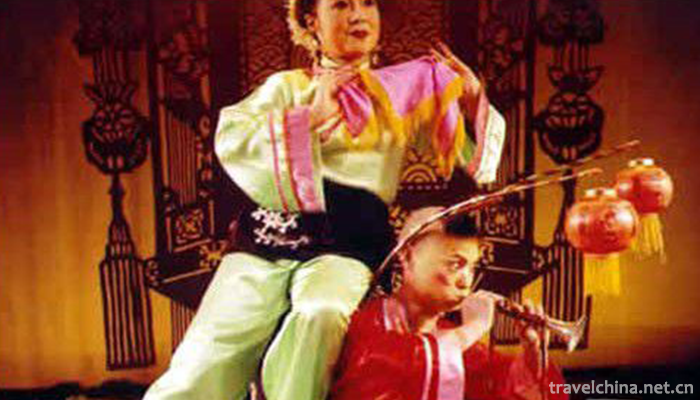
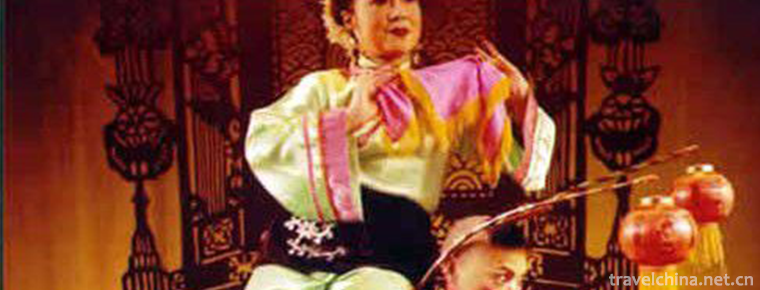
Lantern show
-
Chengdu Panda Base
No. 1375 panda Road, Chenghua District, Chengdu city, Sichuan province
Views: 251 Time 2018-09-28 -
Quyuan Hometown Tourist Area
The cultural tourist area of Quyuan's hometown is located in Fenghuangshan, Zigui County, Yichang City, with a total area of 33.3 hectares in the north, Gaoxia Pinghu Lake in the north
Views: 173 Time 2018-12-12 -
Badachu Park
Located at the south foot of Beijing's famous Xishan scenic spot, Badadu Park is a national AAAA-level scenic spot. It is the first batch of key cultural relics protection units in Beijing after the f
Views: 136 Time 2018-12-24 -
Huizhou Seaside Hot Spring Resort
Huizhou Coastal Hot Spring is a large-scale comprehensive resort built according to the national standard of "AAAAAA" scenic spots and five-star hotels. It integrates tourism and vacation
Views: 234 Time 2019-01-19 -
Longchang Shipaifang Tourist Area
Located in Longchang City, Sichuan Province, China, Longchang Stone Memorial Architecture is a very important type of traditional Chinese architecture. It was rated as a class 4A tourist attraction by
Views: 196 Time 2019-02-06 -
Pingyao Ancient City Scenic Spot
Pingyao Ancient City is located in Pingyao County, central Shanxi Province. It was founded in Xuanwang Period of Western Zhou Dynasty (827-782 BC).
Views: 167 Time 2019-02-07 -
The story of Xie Jin
Xie Jin (Dec. 6, 1369 - Feb. 22, 1415), a literary Minister of Ming Dynasty, was born in Jishui, Ji'an Prefecture, Jiangxi Province.
Views: 125 Time 2019-05-06 -
Mongolian camel raising custom
The Mongolian camel-raising custom has a long history. In the practice of production and life with a long history, camel has become the most loyal partner of mankind while making outstanding
Views: 101 Time 2019-06-04 -
Traditional Brewing Techniques of Brewing Wine
The traditional brewing technology of Jinhua liquor is the traditional handicraft technology of Jinhua City, Zhejiang Province. The typical representative and complete remains
Views: 154 Time 2019-06-07 -
Production Techniques of Gold Bricks in Suzhou Royal Kiln
Royal kiln bricks production technology is complex, up to 20 processes, including the main processes of mud selection, mud drilling, billet making, kiln loading, firing, bass water, kiln out, grinding
Views: 183 Time 2019-06-17 -
Chinese Fashion Making Skills
Chinese style clothing (dragon and Phoenix cheongsam) originated from the late Qing and Qianlong dynasties, and is the inheritor of the Shanghai style cheongsam. Hengsheng's suit, which originated in
Views: 191 Time 2019-08-03 -
Ao Bai
O Bai (about 1610) - 1669, Manchu: Oboi) Guwalgiya Manchuria is set in Huangqi banner. Mio Yuanhoon, Quan Chen, the son of Saul fruit of the tribal chieftain of the Qing Dynasty, the founding fathers
Views: 273 Time 2019-09-11
